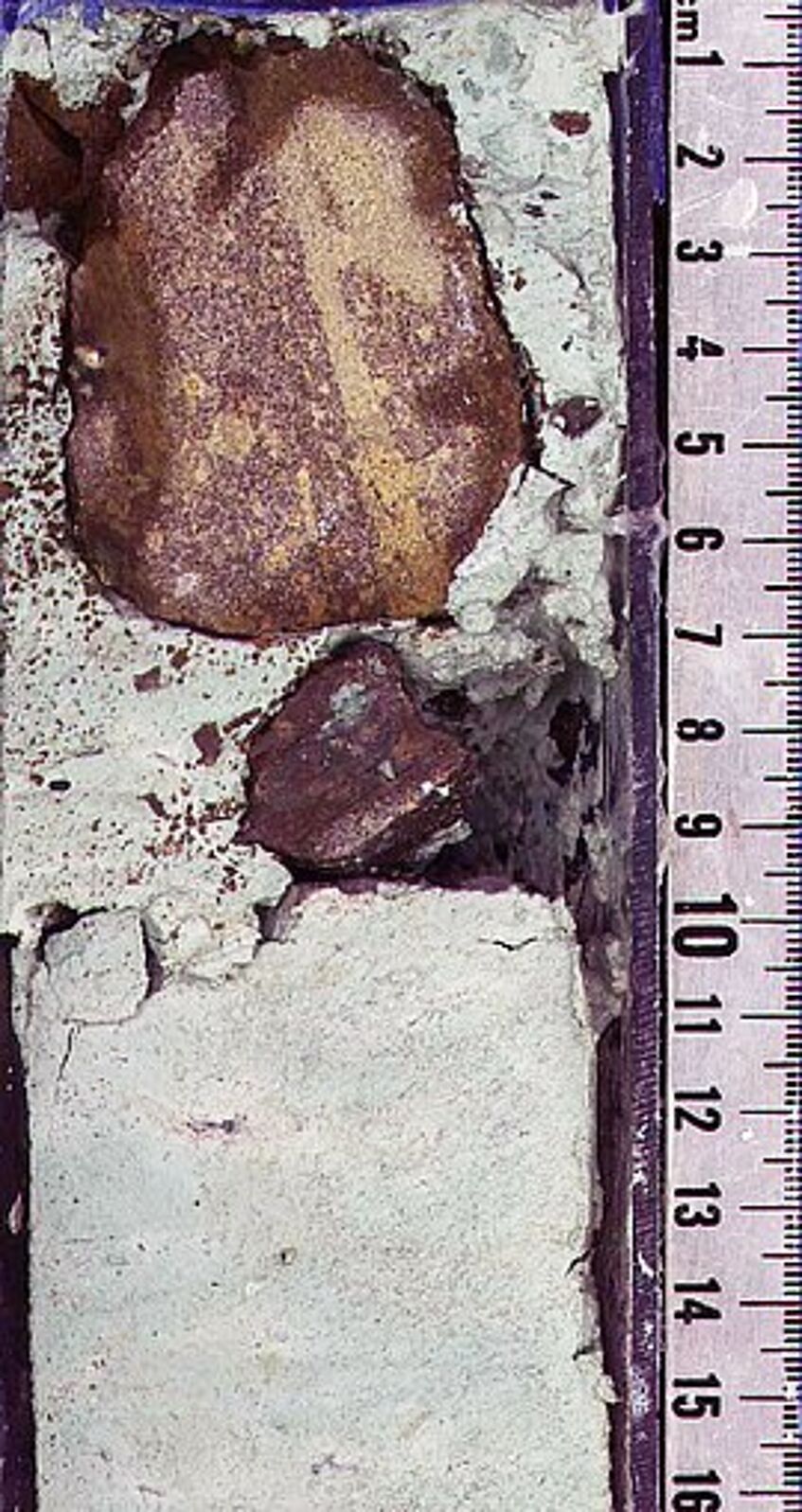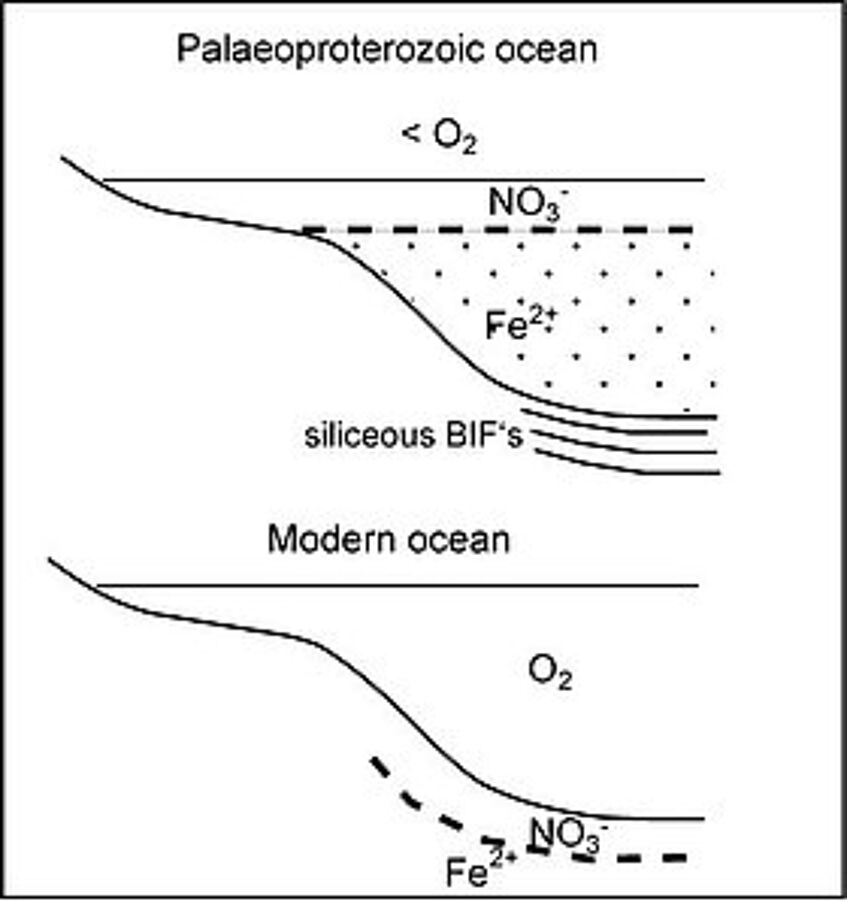Implications on early Earth's conditions from modern analogues
Early diagenetic quartz nodules were found to form at approximately 20°C at 400 metres below seafloor in the Eastern Equatorial Pacific. The precipitates coincide with a deep Fe-oxidation front where Fe(II) oxidation is linked to nitrate reduction. Quartz is interpreted to form as a result of binding of silica to freshly precipitated Fe-oxide.
This scenario is discussed as a recent analogue for the formation of abundant banded Fe-chert formations ca. 2.4 Ga ago. While the common scenario suggests onset of an oxic atmosphere around that time, the modern analogue demonstrates that also nitrate could have caused oxidation of the iron. Perhaps, the atmospheric oxygen level at that time was no more than a „whiff“ (Meister et al., 2014).

Quartz-chert nodule recovered from ca. 300 mbsf in the Eastern Equatorial Pacific (ODP Site 1226) embedded in white nannofossil ooze (Meister et al., 2014).

Two scenarios for the iron oxidation front in the Proterozoic ocean (top) and the modern ocean (bottom) (Meister et al., 2014).
